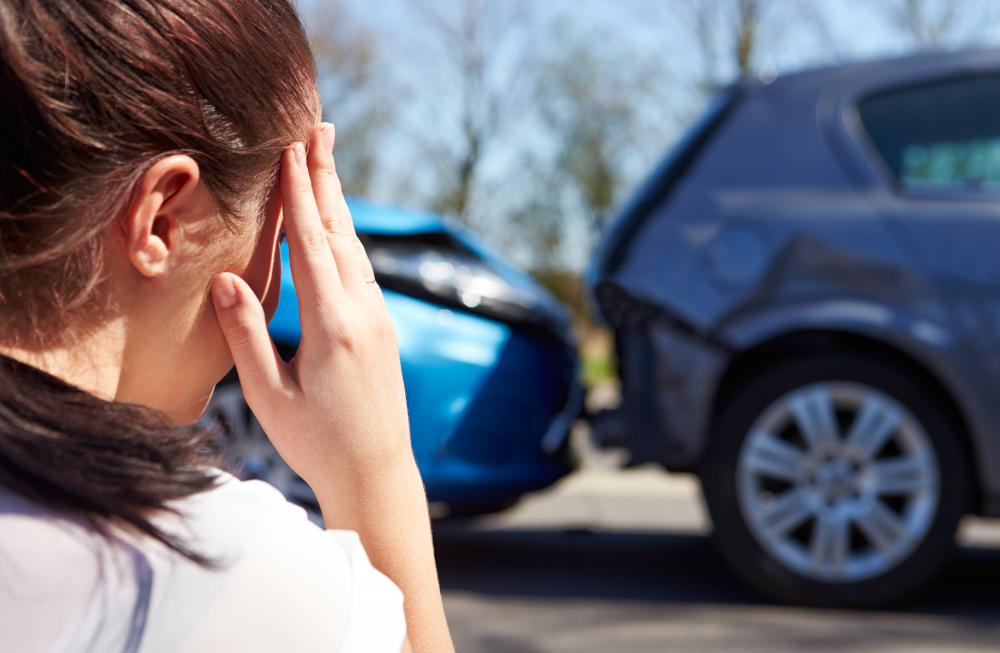At WiseGEEK, we're committed to delivering accurate, trustworthy information. Our expert-authored content is rigorously fact-checked and sourced from credible authorities. Discover how we uphold the highest standards in providing you with reliable knowledge.
What is Cervical Herniation?
A cervical herniation occurs when a disc in the cervical, or neck, region of the spine bulges or ruptures. Other terms used for a herniated disc are “herniated nucleus pulposis” (HNP), “slipped disc,” and “ruptured disc.” The disc is a fibrous cushion with an outer band called the annulus fibrosis that surrounds a jelly-like substance called the nucleus pulposus. The discs are located between each of the seven vertebrae in the neck and are meant to pad the movements of the spine. When a disc herniates, the outer band of the disc protrudes, tears or ruptures, allowing the jelly-like substance to seep out.
Like the other vertebrae, the cervical vertebrae have foramen, or holes, through which the spinal cord passes. Unlike the rest of the spine, however, the vertebrae of the spine also have small foramen for a major artery the cervical nerves, which control the arms, neck, and upper torso. If a disc ruptures in this region of the spine, it can put pressure on the cervical nerve roots called cervical radiculopathy, causing pain and difficulty moving the upper body. On rare occasions, the rupture exerts pressure on the spinal cord, called cervical myelopathy, which is a more severe medical issue.

A cervical herniation usually occurs in the lower neck. Cervical discs are smaller and less prone to rupturing than discs of the lumbar region of the spine. Chronic poor posture or neck strains can weaken the disc over time, however, and culminate in a herniated disc. Disc degeneration associated with normal aging contributes to the problem, as the nucleus pulposis loses fluid. Acute trauma can also cause a cervical herniation, particularly in cases where the patient has experienced whiplash. Whiplash occurs when the neck is suddenly and forcefully thrust in one or more directions, as often happens in car accidents.

Symptoms of a cervical herniation vary based on which disc is affected. Common symptoms include a radiating pain from the neck down the arm, tingling or pins and needles (paresthesias) in the arm, or weakness in the arm muscles. A patient with cervical myelopathy, where the spinal cord is compressed, may experience spasticity, a neurological condition in which muscles get continual commands to contract and relax. This may present with loss of bowel control or difficulty walking. Patients with these symptoms should get immediate medical attention to prevent permanent neurological damage.

The vertebrae of the spine are numbered with the lowest at the top of the spine (closest to the head), and given a letter to describe its region. So, C1 describes the vertebra in the cervical region closest to the head, C7 describes the vertebra in the cervical region farthest from the head, and T1 describes the vertebra in the thoracic spine (the rib region) closest to the head. If the disc between C4 and C5 is ruptured the patient may expect numbness or weakness in the shoulder, the disc between C5 and C6 may cause numbness in the forearm and numbness in the upper arm and thumb, the disc between C6 and C7 may cause numbness in the middle finger and all fingertips and weakness in the wrist, and the disc between C7 and T1 can exhibit weakness in hand grip and numbness in the ring and pinky fingers.
After diagnosing the cervical herniation, a doctor will decide between a conservative non-surgical treatment, and a surgical treatment. Most patients with ruptured discs do not need surgery. Non-surgical movement usually implies restricting movement of the cervical spine and keeping the neck flexed forward to reduce pressure on the nerve roots. The patient is also commonly administered anti-inflammatory pain medications, and may choose to undergo cervical traction, where the spine is pulled in opposite directions in order to relocate the vertebrae. This should only be conducted by a specially trained doctor.
In severe cases, a doctor will perform a surgery to correct the ruptured disc. This commonly takes the form of an anterior discectomy and fusion (ACDF), in which the doctor operates from the front. The surgeon will remove a piece of the disc and replace it with another bone of the patient’s or of a donor. Posterior discectomies are less common and more complex, as they require the removal of a piece of bone to access the disc that needs to be removed.
AS FEATURED ON:
AS FEATURED ON:













Discuss this Article
Post your comments